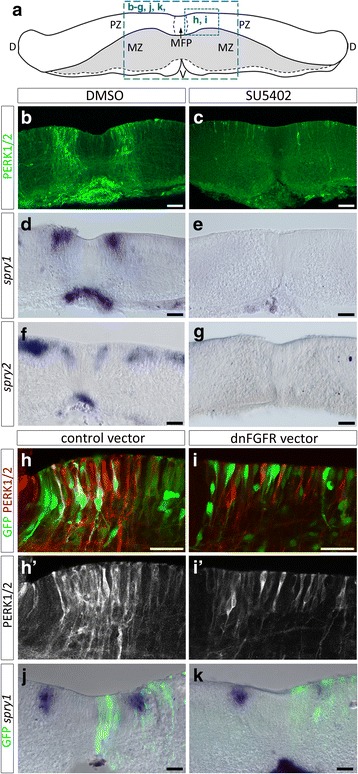Fig. 3.

Inactivation of FGFRs results in defective activation of ERK1/2 and in down-regulation of spry1/2 expression in spinal cord explants. a Scheme of a transverse section through spinal cord explant cultivated as opened-book showing the progenitor zone (PZ) on top and the mantle zone (MZ) at the bottom of the explant. The former dorsal region of the spinal cord (D) lies on each side of the explant while the ventral region (V) is in the middle. The dashed blue panels outline the areas shown in images below. b-c Immunodetection of P-ERK1/2 on transverse sections of spinal cord explants isolated at E4.5 and cultivated as opened-book explants (progenitor cell layer on top) for 2 days in control condition (a) or in presence of SU5402 (b). d-g Detection of spry1 (d, e) and spry2 (f, g) in control condition (d, f) or in presence of SU5402 (f, g). h-i Higher magnification of the ventral progenitor zone (floor plate cells are on the left) showing immunodetection of P-ERK1/2 (red in h and i, h',i') after electroporation of the control vector (green in h) or the dnFGFR vector (green in i). j-k Detection of spry1 mRNA after electroporation of the control vector (green in j) or the dnFGFR vector (green in k). MFP = medial floor plate. Scale bars = 50 μm
